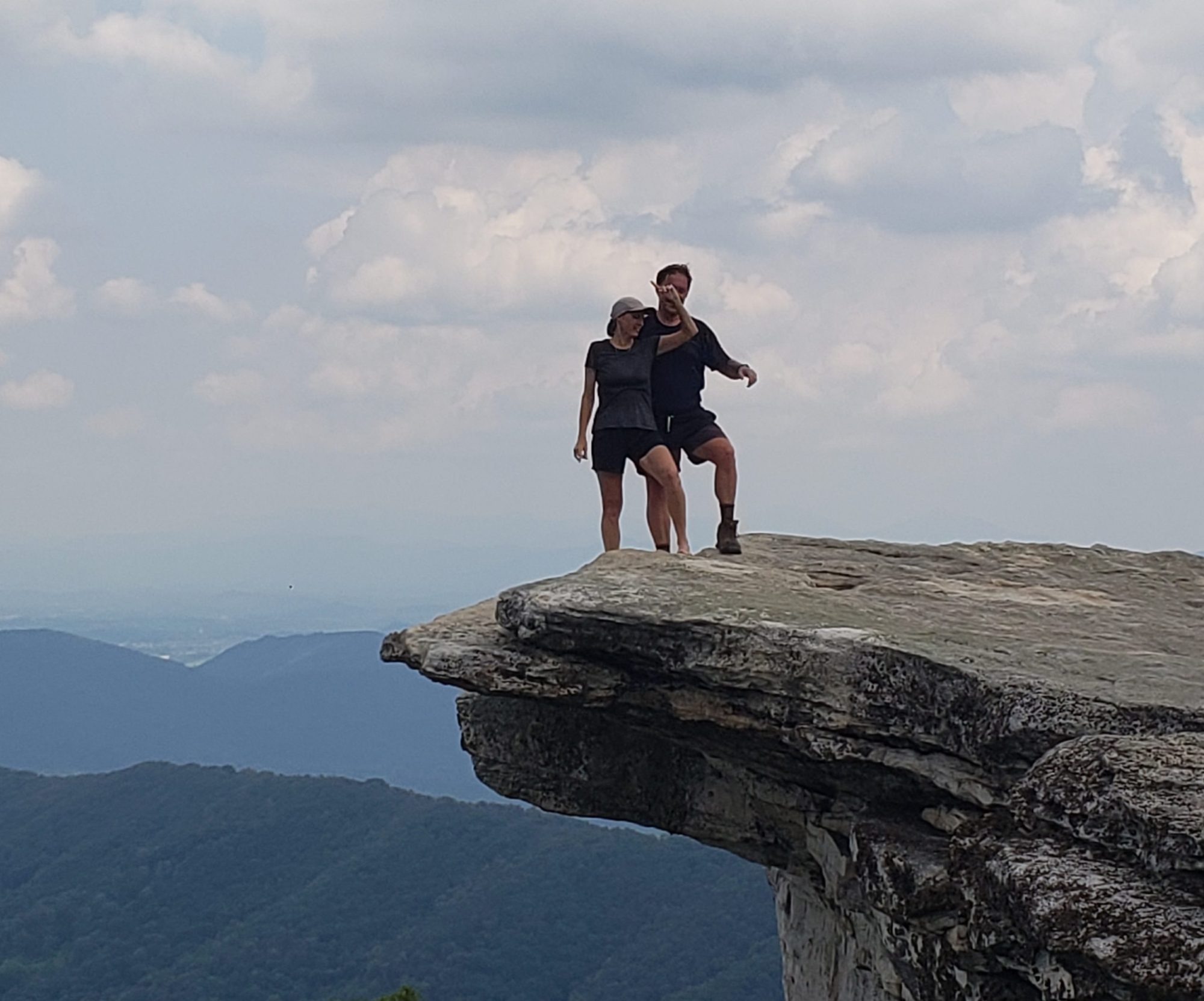As the Balcony House advertised many ladders and small tight spaces to crawl through we left it for last to allow my back to heal up. It is not the only dwelling with many balconies but they are the most preserved for our viewing pleasure. Balconies are thought to have been used as a “catwalk” of sorts allowing residents to walk between and among the many rooms in the dwelling.

Balcony House is a bit more secluded, hiding away under a large stone canopy. We wondered here, more than other dwellings here, how the residents managed to enter and exit the property? We made it through climbing many tall ladders built with modern tools and technology.



Laurie made it up the ladders and now it is time to explore!



The size of the average human inhabitant was about 5 foot 4 inches. This doorway seems awfully small for even that size. We were constantly reminded to not hold onto anything as we walked through the house. Look at the right picture at the blackened stones where many folks, including myself had to steady themselves on the wall with their hands.

Crazy the tight spaces we were supposed to follow on the tour.

This is a what is called a “seep”. A watering hole of sorts. The rain seeps through the porous sandstone and then hits the layer of shale which “pushes” it out of the rock into a puddle as above. This was not enough water for all the daily chores but certainly a nice drinking fountain to gather round and tell stories of all the tourists that will someday be trapesing around their home.

Above is a picture of one of the balconies at Balcony House. It blew us away to see the almost 1000 year old timbers used as well as the mossy bark of the juniper tree as a kind of rebar to sturdy up the ledge.

Check out the smoke stains on the wall and roof of this secluded room in the house.


After climbing the ladder on the left we had to creep through that little opening in the back to get to the next room. The picture on the right is of one of the many kivas in the property. A sacred space most likely used for important and/or religious functions.


The guide made it crystal clear that if you have a fear of heights or any physical disability that might keep you from climbing these ladders to head for the exit before the tour started. The pic on the right is looking down one of the ladders and series of steps carved out of the rock.
After our tour we figured it was time for some exercise. There were many trails to hike in the park so we chose 2 of them that form the figure 8 up on a mesa looking down on the campground the park offers. We opted to walk the south and north loops on separate days as they were each a good 5 miles of walking. Loving the dry air out here as even when temps hit the 90s I do not sweat nearly as much as usual.

The trails in the park are not very well marked but for veterans like us, we used the map, compass and gps to keep us on the straight and narrow. Sometimes straighter than narrower but usually more narrow than straight.


Check out the fabulous blue sky with the park’s buttes and mesas surrounding the campground. The pic on the right interested us as it appears the road simply ends. Turns out there is a nice tunnel drivers must enter there.

Got to love nature as it finds a spot for this lonely tree to help with the erosion process the sandstone will go through.

It seems like wherever you go for a hike in Mesa Verde there is evidence of a past civilization to gawk at. The tower with the 3 windows is the tallest man made structure in the park. We are still awed at the preservation that has gone on here.

The short walk up the path to the high point of the park reminded us that although we are in decent hiking shape, the parks altitude does play havoc on your uphill breathing. We were also told that the thinner atmosphere also allows for more of the suns UV light to help burn our skin and give us a higher chance of melanoma.



Every corner we wound around on our hikes provided either fabulous views or a glance back in time.



Such peaceful places we came across. Perfect for a picnic lunch and a good book or a siesta?


As I stare out across the canyon at what seemed to be more dwellings I stopped to think about what life must have been like for the indigenous folks many centuries ago.
























































































